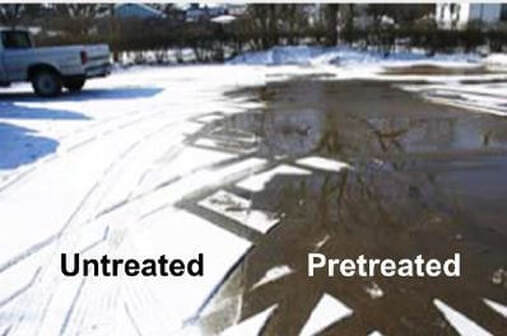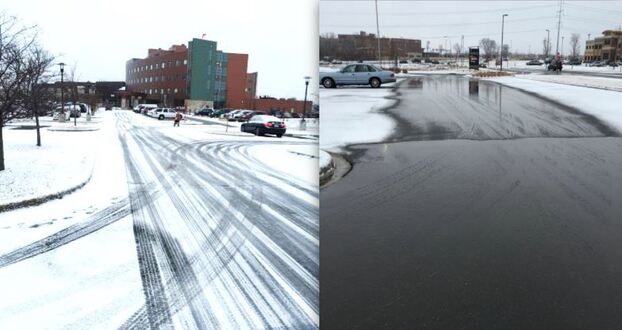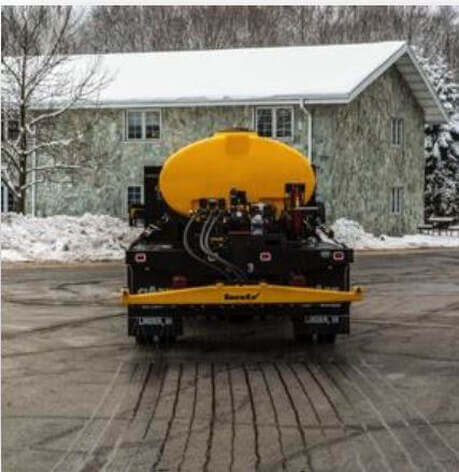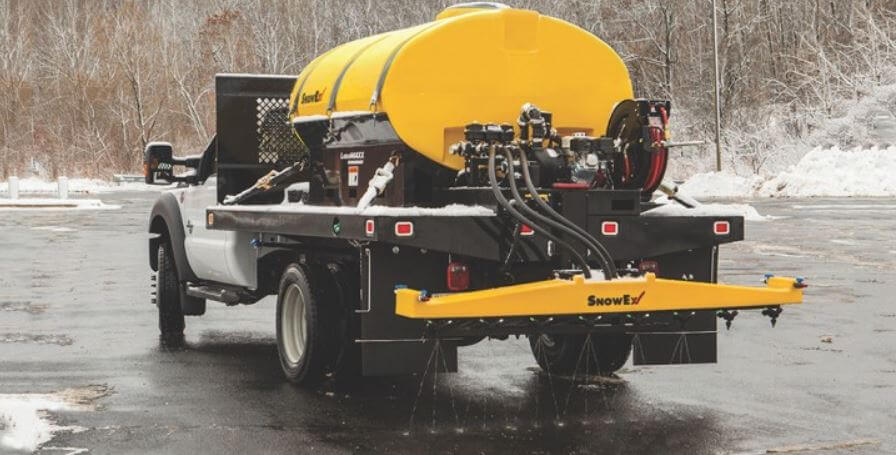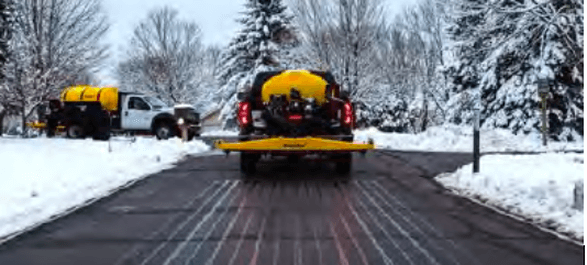
While we are in the midst of the summer season, the Greenscape teams are already beginning to prepare for the upcoming winter. Greenscape regularly meets with clients to understand their true objectives and ways to improve our snow service. The conversation of late has largely been centered around the introduction of Salt Brine as an effective tool to use in combatting winter storms. We hope the following information helps to provide valuable insight into the effectiveness and limitations of Salt Brine.
What is Salt Brine?
Salt Brine is an effective liquid solution for fighting snow and ice on roadways, parking lots and walkways. Salt Brine is made in tanks circulating specific amounts of rock salt and water until the concentration of salt in water reaches a specific percentage. The solution is then pumped into holding tanks in preparation for use. Other elements such as calcium or magnesium may be added to address specific temperature ranges of a storm to increase the effectiveness of the application.
Many use Salt Brine for snow removal by pre-treating surface areas in anticipation of wintry conditions. If applied before a winter storm, Salt Brine will begin working as soon as the first snowflake falls and will help delay the accumulation of snow and ice on the pavement. While granular salt alone lowers the freezing temperature of ice, it must be wet for the chemical reaction to take place and melting to begin. Putting dry salt down means you must wait for pre-melting to begin – liquid Salt brine on the roads jumpstarts this process.
When is Salt Brine Used?
One of the major benefits of Salt Brine is the ability to apply Brine up to 48 hours in advance of a storm. The peace of mind knowing that your property is treated and prepared for an event is substantial. Lots of things can go wrong before a snow storm: forecast changes, equipment breaks down, traffic etc. Knowing that your property has been pretreated is extremely reassuring when facing these variable factors. Despite the many positives of Salt Brine, there are certain weather conditions in which the application of Brine is not advisable. Contractors should monitor weather forecasts and record pavement temperatures to correctly diagnose the optimum application times before brining roads or parking lots.
When is Salt Brine Not Advisable?
- If snow/ice has already bonded to the pavement
- Painted surfaces and crosswalks
- In extreme cold
- If the storm begins as rain
- Pavement temperatures are above freezing
How is Salt Brine Applied?
Salt Brine is applied in specially designed trucks with holding tanks and spray bars. The spray bars apply several streams of brine onto the roads. Sidewalk units can spray brine from a hand-held wand or powered spray unit. These units allow the applicator to control the amount of material applied based on the conditions present or forecasted.
Is Salt Brine Better for the Environment?
Salt applications to roads and paved areas have a major impact on our environment. Salt naturally migrates into lakes and streams and can have a major impact on your landscape plant material. Salt corrosion is one of the leading causes of road and bridge deterioration in Northern climates. Brine applications to an area use ¼ of the salt that would be applied in a similar application. In addition, because it is directly applied to the surface there is no scatter or bounce into unintended areas.
Other Advantages of Salt Brine
- Anti-icing allows the road surfaces to be cleaned quicker and cleaner, resulting in fewer accidents and delays
- Using Liquid Brine for snow removal starts the melting process faster than rock salt
- Brine road treatment doesn’t bounce or blow off the road, impacting other areas or wasting product
- If the storm is delayed the Brine remains, and is ready when the storm begins
- The amount of salt applied is significantly reduced to walkways and roadways
Why Doesn’t Everyone Use Salt Brine?
The main reason that liquid Salt Brine use has not been widespread is that there is a significant upfront investment in the equipment and training needed. Most customers are paying for De-icing on a per-application basis, and there is no incentive to the contractor to make a switch.
Why do Snow Contractors Over-Salt?
- Liabilities: Slip and fall claims related to winter service account for more lawsuits than any other, except auto.
- Contractors will over salt to protect themselves from litigation
- Equipment to start up Salt Brine operation is expensive
Salt Brine is one major component in the all-encompassing snow and ice management services Greenscape provides. With teams prepared 24/7, we are well equipped to handle the unique challenges of winter. We keep abreast of weather conditions and forecasts, so we are prepared well in advance to care for your property in the event of a storm or precipitation. If you are interested in reviewing options for your property this winter, please contact us today!


